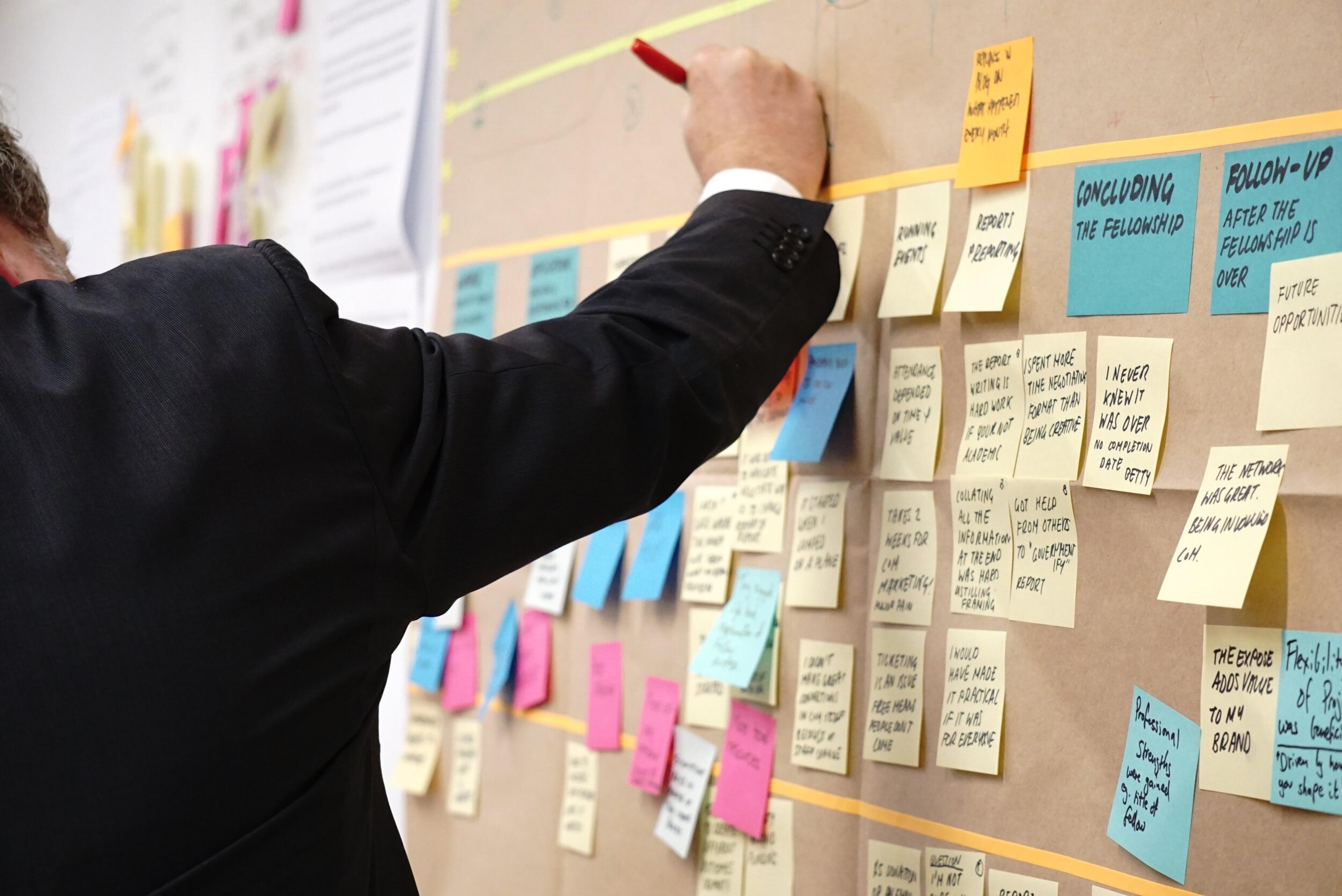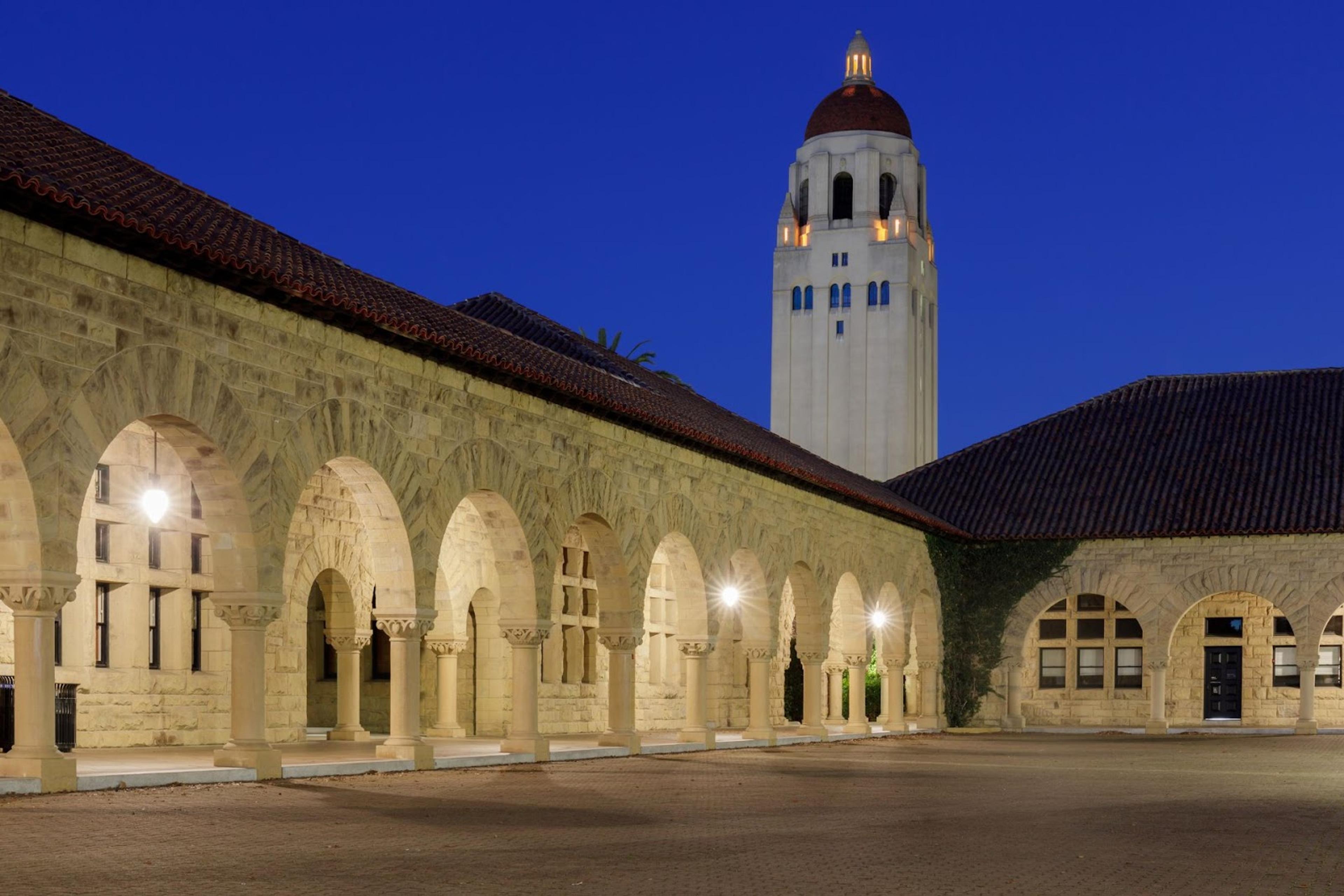
Table of Contents
Free Event

Featuring Horatiu S.
Profile Power: A LinkedIn Profile That Gets You In
Starting Tuesday, September 2
11:00 PM UTC · 45 minutes

Featuring Horatiu S.
If you're applying to the Kellogg School of Management, you’ll be asked to complete the Kellogg MBA video essay shortly after you submit your application. This component is a required part of the application process, and it allows the Kellogg admissions team to hear directly from you, unfiltered and unscripted.
In this guide, we'll walk you through what the Kellogg video essay is, what types of video essay questions you might get, and how to prepare and present your best self. We've also included structured elements you can use, tips from Fortuna’s expert coaches, and specific insights that apply only to Northwestern University’s Kellogg School.
How Important is the Kellogg Video Essay?
The video essay holds great weight in the evaluation of your application. It allows the admissions committee to assess your verbal communication skills, body language, and ability to think on your feet. Moreover, it offers a glimpse into your personality, which is a crucial factor in determining your fit with the Kellogg community. Therefore, it is essential to approach this essay with careful consideration and preparation.
When you think about the video essay, imagine yourself stepping into the shoes of a Kellogg student. This is your chance to showcase your unique qualities and demonstrate why you are a perfect fit for the Kellogg community. As you prepare for the video essay, think about the experiences and stories that have shaped you into the person you are today. Consider the values and principles that guide your actions and decisions. By sharing these insights, you can provide the admissions committee with a deeper understanding of who you are and what you can contribute to the Kellogg community.
The Role of the Video Essay in Your Application
The video essay is designed to complement the written components of your application, such as your essays and resume. It provides another dimension for the admissions committee to assess your candidacy. Your video essay offers a unique opportunity to provide a more personal and dynamic presentation of your qualifications, experiences, and aspirations.
Imagine yourself sitting across from the admissions committee, engaging in a conversation about your goals and aspirations. The video essay allows you to bring your application to life and create a lasting impression. Through your words, gestures, and expressions, you can convey your passion, determination, and commitment to making a positive impact in the business world.
Remember, the video essay is not just about showcasing your achievements; it is about showcasing your potential. It is an opportunity to demonstrate your ability to think critically, solve problems, and communicate effectively. Use this platform to highlight your unique perspective, innovative ideas, and ability to collaborate with others.
What Kellogg is Looking for in Your Video Essay
Kellogg seeks candidates who exhibit strong interpersonal skills, leadership potential, and a genuine passion for learning. The video essay allows the admissions committee to evaluate these qualities in an interactive and engaging format. Therefore, it is essential to convey your authentic self, while also highlighting your strengths and achievements.
When preparing for the video essay, take some time to reflect on your experiences and identify the moments that have shaped your leadership abilities. Think about the challenges you have faced, the lessons you have learned, and the impact you have made. By sharing these stories, you can demonstrate your ability to lead and inspire others.
Additionally, Kellogg values diversity and inclusivity. Use the video essay as an opportunity to showcase your cultural awareness, empathy, and ability to work effectively with individuals from diverse backgrounds. Highlight instances where you have demonstrated your commitment to fostering an inclusive environment and creating opportunities for others.
Lastly, remember to be yourself. The admissions committee is looking for authentic individuals who will contribute to the Kellogg community in meaningful ways. Embrace your unique qualities, share your passions, and let your personality shine through. The video essay is your chance to make a lasting impression and show why you are the perfect fit for Kellogg.
What You Need to Prepare for Your Kellogg Video Essay
Proper preparation is key to performing well in your Kellogg video essay. By researching and understanding the essay prompt, planning your response, and practicing your delivery, you can boost your confidence and ensure a successful performance.
Research and Understand the Essay Prompt
Take the time to thoroughly understand the essay prompt. Consider the specific question being asked and the qualities Kellogg is looking for. Reflect on your own experiences, goals, and values that align with the prompt. This will help you craft a compelling and relevant response.
Plan Your Response
Before recording your video essay, outline your main points and structure your response. Consider the key messages you want to convey and the examples you will use to support your statements. A well-planned and organized response will help you articulate your thoughts more effectively.
Practice Your Delivery
Practice delivering your response multiple times. Pay attention to your body language, vocal tone, and facial expressions. Practice in front of a mirror or record yourself to identify areas of improvement. Seek feedback from friends, family, or mentors to refine your presentation skills.
3 Key Technical Aspects of the Kellogg Video Essay
In addition to the content of your video essay, technical aspects play a significant role in the overall impression you make on the admissions committee. By carefully considering the equipment you use, setting up your recording environment, and dressing appropriately, you can enhance the quality and professionalism of your video essay.
Choosing the Right Equipment
Select a camera or webcam that delivers high-quality video and audio. Ensure that the lighting is adequate and that the microphone captures clear sound. Investing in a external microphone or using headphones with built-in microphones can improve the audio quality of your recording.
Setting Up Your Recording Environment
Choose a quiet and well-lit area for recording your video essay. Remove any distractions or potential interruptions. Consider the background of your video as it can provide additional context about your personality and interests. A clutter-free and professional setting will leave a positive impression on the admissions committee.
Dressing for Success
Wear professional attire that reflects your understanding of the importance of this interview-like experience. Dress as you would for an in-person interview, ensuring that your outfit is well-coordinated and appropriate for the business school setting. Presenting yourself professionally will demonstrate your professionalism and readiness for the MBA program.
Common Kellogg Video Essay Questions
Kellogg doesn’t release the full list of video essay questions in advance, but many applicants, admissions coaches, and MBA forums have documented recurring patterns. These prompts typically fall into six core categories: behavioral, personal, professional, leadership, creative, and career-oriented. As you prepare for this year's behavioral questions, focus on storytelling that highlights leadership, impact, empathy, and collaboration to make a memorable impression.
While the exact wording may vary, the Kellogg admissions committee is testing the same core things: your ability to think on your feet, your interpersonal style, and how well you communicate your values and goals. Each question gives you 20 seconds to prepare and 60 seconds to respond, so structured thinking and clarity are key. Including more structured elements in your responses, such as clearly organized stories that demonstrate your qualities, will make your answers more coherent and compelling. Here’s a breakdown of the Kellogg video essay question types, with examples and tips:
| Question Type | Example Prompts | What Kellogg’s Admissions Team Is Looking For |
|---|---|---|
| Behavioral | “Tell us about a time you led a team through a conflict.” | A clear story that shows how you handled a team conflict, made decisions under pressure, or turned a difficult situation into a positive impact. Use the STAR method. |
| Personal Introduction | “Give us a short video introduction that helps us get to know you.” | This is your video introduction, a quick chance to show the real you, your background, and personality. Don’t restate your resume. Focus on what makes you different. |
| Professional Growth | “Share a professional failure and what you learned from it.” | Be honest. Show your ability to give a candid assessment of mistakes and how you’ve grown. Don’t blame others. Focus on accountability and self-awareness. |
| Leadership & Teamwork | “Describe a time when you worked with diverse teams to reach a common goal.” | Pick a moment that shows how you led or collaborated with diverse teams, your communication style, and how you created alignment in a group setting. |
| Unique or Creative | “Tell us something interesting that’s not in your resume.” | Share a human detail, maybe a brief viola performance, an important relationship, or a side project that reflects your values or curiosity. Keep it professional but fresh. |
| Career Vision | “What are your short- and long-term career goals? Why is Kellogg the right program?” | Be specific about your career goals, how a Kellogg MBA fits into that, and why Kellogg specifically is the best fit. Connect this to your leadership and learning goals. |
Strategy: Focus on One Clear Story Per Question
Kellogg wants focused, concise answers. Don’t try to cover multiple achievements in one response. Choose one standout example that directly addresses the prompt.
For behavioral questions like “Tell us about a time” or “Describe a team conflict,” structure your answer like this:
- Situation – Brief context (your role, team, or project)
- Task – What challenge did you face?
- Action – What did you personally do?
- Result – What changed? What did you learn?
Practice Tips
To prepare, we created a list of realistic practice questions based on what Kellogg asks each year. However, keep in mind that the Kellogg MBA video essays do not require much preparation; being able to think on your feet and respond spontaneously is key. Here are a few more you might encounter:
- “Tell us about a time when you had to give tough feedback to a teammate.”
- “Describe a moment when your idea was challenged, and how you responded.”
- “What’s a common misconception people have about you?”
- “What do you like to do in your free time that others might not expect?”
- “Tell us about a professional moment where you had to step into a team leader role unexpectedly.”
Note: Recording yourself answering these can help you refine your content, pace, and delivery. Always connect your answers back to the qualities the Kellogg community values: collaboration, leadership, humility, and growth.
How To Prepare Your Kellogg MBA Video Essay
1. Practice with Realistic Prompts Based on Past Years
Before recording anything, gather a set of practice questions that reflect what Kellogg asks year after year. These questions typically come from behavioral categories, personal background, or leadership challenges. Focus on prompts that push you to show your interpersonal style, leadership style, and ability to reflect under pressure.
- Tell us about a time you led a diverse team.
- Describe a team conflict and how you handled it.
- Share a moment when you constantly under-delivered, what did you do next?
- What’s an important relationship that shaped your values?
- What’s a misconception people often have about you?
Expert Tip: Practicing these out loud helps you get used to the time limit (20 seconds to prepare, 60 seconds to respond). Use a timer, record yourself, and watch the playback to cut filler words and tighten your message. Each session helps you become more confident and concise.
2. Choose Stories That Align With Kellogg's Core Values
Kellogg doesn’t just want polished applicants. They want future Kellogg leaders who take ownership, collaborate well, and create a positive impact in their work and community. So when choosing what to share, avoid generic success stories and instead select moments that showed how you responded to setbacks or made decisions in real-world situations.
Example:
"I was a newly promoted team leader, and my team missed a major deadline on a client rollout. I had overlooked early warning signs and didn’t escalate concerns soon enough. Rather than blame the team, I took responsibility, restructured how we tracked deliverables, and worked nights to reset expectations with the client. That failure, and the creative solution we used to recover, taught me more about leading than any of our wins that year."
3. Use a Structured Format for Every Response
With only 60 seconds to speak, there’s no time for rambling or backstory. Kellogg recommends that each response include structured elements so your message is clear from the start. Here's a five-part template to structure your response:
- Opening Line – A one-sentence answer that directly responds to the prompt→ “One time I led a diverse team was during a global product launch in my second year at XYZ.”
- Context – Brief background on the situation and my job title
- Action – What specific steps I take as a leader
- Result – The outcome, and how it affected the team or project
- Closing – What I learned and how that moment still shapes my leadership style
Tip: This format keeps you focused and makes it easier for the Kellogg admissions team to follow your story. Use the same structure whether you're talking about a professional failure, an important relationship, or a time you delivered results.
What Kellogg Really Looks For
The Kellogg admissions team isn’t only evaluating what you say, they’re paying close attention to how you say it, how you think through challenges, and whether your values match those of the Kellogg community. The video essay gives them an unfiltered look at your communication style, decision-making, and leadership mindset in real time.
What the Admissions Committee Wants to See
- A clear leadership style: Kellogg looks for applicants who take initiative, bring people together, and share responsibility. Whether you’re a formal team leader or led informally, your story should show how you contributed to group success. Even better if you made decisions with limited information or during uncertainty.
- Strong interpersonal communication: Your ability to speak clearly and connect with others is key. This includes how you talk about working with diverse teams, listening to others, and managing team dynamics.
- Self-awareness and growth: Kellogg values reflection. If you talk about a professional failure or a time you constantly under-delivered, be honest, but also explain what changed. They want to see how you've grown.
- Alignment with Kellogg culture: Kellogg builds collaborative leaders. Your response should reflect an understanding of how you’d add value to the Kellogg community, not just academically, but also through clubs, group projects, and peer learning.
- Authenticity: You’re not expected to be perfect. You’re expected to be real. The strongest applicants show the real you, someone with real strengths, clear goals, and a thoughtful approach to leadership.
What the Admissions Committee Wants to Avoid
- Over-polished or memorized answers: Kellogg can spot memorization. If your tone sounds too rehearsed, it can come across as impersonal or disingenuous. Speak naturally, like you would in a one-on-one conversation with an admissions officer.
- Repeating other parts of your application: Don’t reuse your written word from essays or simply summarize your LinkedIn profile. The video is your chance to go beyond what’s already been submitted, bring in new insights, or add depth to a point you briefly touched on.
- Overly long or unfocused stories: Every response is time-limited. Long setups, vague outcomes, or jumping between unrelated ideas weaken your message. Stick to one standout example with a clear structure.
- Surface-level storytelling: If your story lacks a takeaway or if you gloss over what you learned, it won’t land well. Even small moments can be powerful if they show reflection, growth, or values alignment with Kellogg specifically.
Technical and Presentation Tips
Your performance on the Kellogg MBA video essay isn’t just about what you say; it’s also about how you deliver it. In today’s professional life, video communication skills are increasingly important, especially in remote work and hiring scenarios. A clear, distraction-free setup helps the Kellogg admissions committee focus on your message, while strong delivery reinforces your presence and confidence.
Equipment and Setup
The technical setup doesn’t need to be elaborate, but it does need to work reliably. Here’s what I used, and what I recommend if you’re preparing your own setup:
| Equipment | Details |
|---|---|
| Camera/Webcam | Use an HD webcam with autofocus for clear video. Built-in laptop webcams are fine if the quality is decent, but avoid grainy or low-light footage. |
| Microphone | Use a USB mic or wired headset. Audio quality matters more than video, and poor sound can distract the reviewer. |
| Lighting | Sit near a window or use a ring light. Avoid backlighting, which creates shadows on your face. |
| Background | Choose a clean, neutral background with no visual distractions. A plain wall, bookshelf, or tidy office works well. |
Kellogg recommends testing your setup ahead of time. I did a full test the day before recording to check for issues with sound, framing, and lighting. They also strongly encourage recording in a quiet environment, with no roommates walking around or background noise.
Note: If you're using a laptop, elevate it slightly so the webcam is at eye level. This avoids awkward angles and helps maintain eye contact.
Delivery Tips
- Speak clearly at a steady pace – Don’t rush. You have 60 seconds. Aim for a natural rhythm.
- Look directly into the camera – This creates eye contact and makes your message more personal.
- Keep a slight smile – It helps you come across as approachable and engaged.
- Sit upright and stay still – Avoid fidgeting or leaning off-center. Good posture conveys confidence.
- Dress professionally – I wore what I would wear to a business school interview: solid-colored shirt, neutral tones, no patterns.
Expert Tip: Record a few practice videos. Watching yourself helps you identify where you looked distracted or ramble. After a couple of runs, timing and tone became much more consistent.
Tying the Video Essay to the Rest of Your Application
The Kellogg MBA video essay isn’t just another part of your application; it’s directly linked to everything else you’ve submitted. The Kellogg admissions committee will view your video after reading your essays, reviewing your resume, and scanning your LinkedIn profile. If your message in the video feels disconnected or inconsistent, that weakens your overall impression. Aligning your video essay with your application materials is essential to help turn your MBA dreams into reality. Here’s how you can make sure your video essay supports the rest of your application materials:
Keep Your Story Consistent
Kellogg is looking for a coherent, well-aligned candidate. That means your professional story, values, and leadership traits should come through clearly across all parts of your application. In the video essay, reinforce a few key points you introduced in your essays, without repeating them word-for-word.
- If your written essay focused on a long-term product leadership goal, your video could reinforce that by showing a story where you led a cross-functional team or addressed a professional failure.
- If your resume shows steady career growth, use the video to explain how that experience connects to your career goals and readiness for a top MBA program like Northwestern University’s Kellogg School.
Explain Why Kellogg Is the Right Program
This is your chance to go beyond generic praise. Mention specific aspects of Kellogg specifically, like the MMM program, student-led initiatives, or the global experiences, and tied those directly to my learning goals. Show that you've done your research and that you aren't applying just because Kellogg is highly ranked.
Tips:
- Mention student clubs, courses, or professors that connect to your interests.
- Briefly explain why the Kellogg community and culture match your learning and leadership style.
Reference Real Interactions (If You Have Them)
If you’ve spoken to an admissions officer, assistant director, or current student, mention it, especially if it shaped how you see yourself contributing to Kellogg. These insights show initiative and help you stand out as a serious applicant.
Example: “After speaking with a second-year student involved in Net Impact, I realized how aligned my values are with Kellogg’s commitment to collaborative leadership.”
Align Your Application Materials
Everything in your application should connect:
- Essays – Reflect your goals, values, and leadership growth
- Resume – Show evidence of impact, progression, and initiative
- Video Essay – Bring your voice and personality to those same themes
- LinkedIn Profile – Match titles, dates, and context from your resume
The Bottom Line
The Kellogg MBA video essay is more than a formality; it’s one of the best chances you’ll have to speak directly to the Kellogg School of Management. If you take it seriously, prepare well, and bring your full self to the response, you’ll give the Kellogg admissions committee a clear reason to believe in your potential. It’s also a chance to clarify your fit. You’re not just applying to any MBA program. You’re applying to Kellogg specifically, and they want to hear why that matters to you. Whether you're aiming to make a positive impact, show your growth from a professional failure, or describe how you lead diverse teams, this is your moment. Use it well.
Need help with your Kellogg video essay?
Work with Caitlin B., Kellogg MBA alum and former Bain manager. She’s helped applicants earn $250K+ in scholarships and get into M7 schools. Caitlin specializes in video essay prep, interview coaching, and application strategy. Fortuna's expert coaches are highly experienced professionals who assist applicants in preparing for video essays and overall MBA application success.
Read these next:
- Kellogg Executive MBA Program: Overview, Acceptance Rate, Pros and Cons
- Kellogg MBA Letters of Recommendation Guide - Questions, Tips, & Examples
- How to Nail Your Kellogg MBA Interview: Overview, Questions, & Tips
- Northwestern Kellogg MBA: Acceptance Rate, Deadlines, Cost, Requirements, & Program Overview
- The 10 Best MBA Admissions Consultants
FAQs
How to answer the Kellogg video essay?
- Speak clearly, stay structured, and show personality. Focus on answering the prompt directly while highlighting leadership, teamwork, and motivation for Kellogg.
How important are Kellogg video essays?
- Very important, they help the admissions team assess communication skills, presence, and cultural fit beyond what’s seen in written materials.
Do colleges accept video essays?
- Yes, some colleges and many MBA programs (like Kellogg, Yale SOM, and INSEAD) use video essays to evaluate applicants' soft skills and authenticity.
How to prepare for an MBA video essay?
- Practice answering common prompts on camera, time your responses, and review your delivery for clarity, tone, and confidence.











